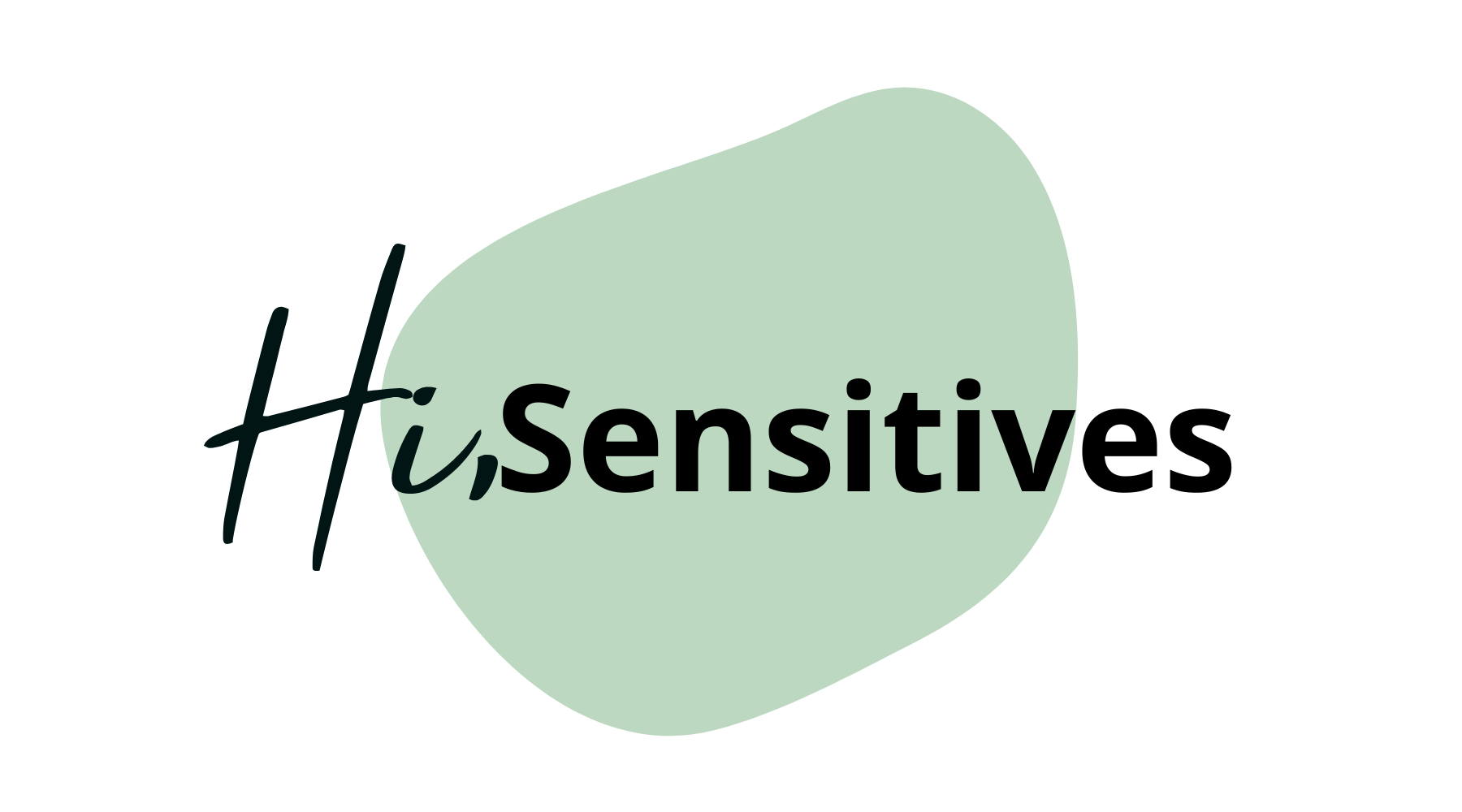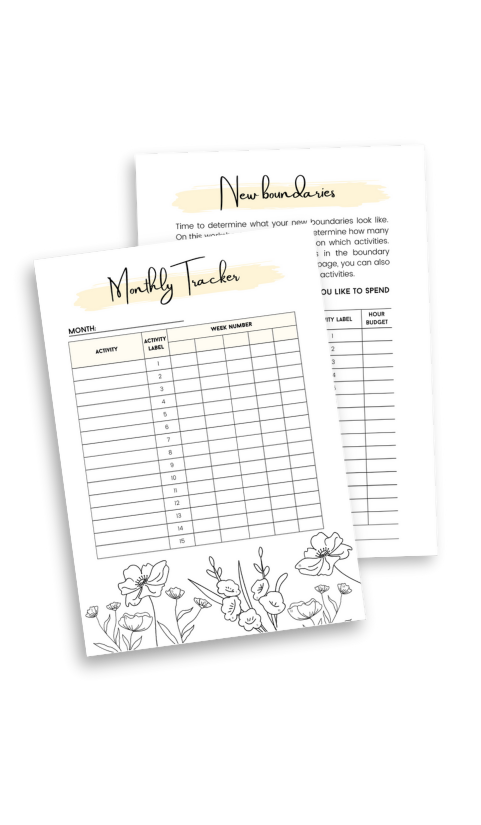Finding yourself anxious and overwhelmed, almost like you’re in alarm mode? In this article, we share 10 helpful calm down techniques for highly sensitive people!
Estimated reading time: 5 minutes
Being a highly sensitive person (HSP) often means you experience life more intensely. Your nervous system can quickly shift into an alarm mode during stressful situations, which can be both physically and emotionally overwhelming. My recent encounter with (now thankfully resolved) technical and security issues in my business account is a case in point.
The stress manifested physically: spine pain, dizziness, a racing heartbeat, and rapid breathing. Recognizing these signs, I put aside my to-do list and focused on calming techniques, some of which I learned from Hypnotherapist and Breathwork Practitioner Ashley Bentley while working with her on personal growth content for the Ideal Self Membership. These methods are highly effective for highly sensitive people and in-depth exploration and more strategies can be found inside the Ideal Self Membership.
Here’s What You’ll Discover:
- #1 Sunlight Walk for Serotonin Boost
- #2 Engaging in Rejuvenating Breathwork
- #3 Watching a Masterclass for Regulating your Nervous System
- #4 Practicing Progressive Muscle Relaxation
- #5 Mindful Meditation and Visualization
- #6 Journaling to Process Emotions
- #7 Engaging in Gentle Physical Exercise
- #8 Listening to Soothing Music or Sounds
- #9 Aromatherapy with Essential Oils
- 10. Setting Boundaries and Saying No
- Some Final Remarks

#1 Sunlight Walk for Serotonin Boost
Sunlight not only brightens your day literally but also metaphorically. A walk under the sun can significantly boost serotonin levels, aiding in calming your nervous system. It’s a simple yet powerful way to disconnect from immediate stressors and ground yourself in the present. The physical act of walking, combined with the tranquility of natural light, can be a quick reset for your overloaded system.
#2 Engaging in Rejuvenating Breathwork
Breathwork is an immediate and accessible tool to calm your nervous system. Calm down techniques such as deep diaphragmatic breathing or guided breathing exercises can significantly slow down your heart rate and stabilize dizziness. Just a few minutes of controlled breathing can shift your body from a state of panic to one of calm, making it a go-to strategy for any HSP in distress.
#3 Watching a Masterclass for Regulating your Nervous System
Educational content, especially focusing on stress management and self-regulation, can provide valuable regulation to your nervous system. For instance, dedicating a few minutes to watching Ashley Bentley’s masterclass inside the Ideal Self Membership can shift your focus and provide practical strategies to manage stress and regulate your nervous system. It’s an opportunity to learn from experts and apply their techniques to your situation.
#4 Practicing Progressive Muscle Relaxation
This technique involves tensing and then slowly relaxing each muscle group. It’s particularly effective for releasing the physical manifestations of stress. As HSPs often hold tension in their bodies, progressive muscle relaxation can provide immediate relief and is a practical approach to managing physical symptoms of stress, such as spine pain or muscle tightness.
#5 Mindful Meditation and Visualization
Mindful meditation, especially when combined with visualization techniques, can transport you to a more peaceful state. Close your eyes and imagine a serene setting – perhaps a quiet beach or a lush forest. Focus on the sensory details: the sound of the waves, the feel of the breeze. This mental escape can provide a much-needed break from the chaos of a stressful situation.
#6 Journaling to Process Emotions
Writing can be a therapeutic outlet for HSPs. Journaling allows you to articulate your thoughts and feelings, which can often be overwhelming and difficult to process internally. It’s a way to declutter your mind and gain clarity on what’s causing your distress. Seeing your concerns on paper can make them more manageable and less daunting.
#7 Engaging in Gentle Physical Exercise
Light physical activities like yoga or stretching can offer a dual benefit. They help release endorphins (natural mood lifters) and alleviate physical stress symptoms. A gentle yoga routine or a series of stretches can be especially beneficial for easing tension in the spine and other areas where stress accumulates.
#8 Listening to Soothing Music or Sounds
The calming effect of certain types of music or natural sounds is well-documented. Soft, soothing tunes or the sounds of nature like rainfall or ocean waves can quickly induce a state of relaxation. This auditory therapy is a simple yet effective way to reset your mood and reduce anxiety levels.
#9 Aromatherapy with Essential Oils
Certain scents have the power to alter your mood. Essential oils like lavender, chamomile, or ylang-ylang can be used in diffusers, as topical applications, or even in a warm bath to provide a calming effect. Inhaling these scents can trigger a relaxation response in the brain, helping to soothe your nervous system.
10. Setting Boundaries and Saying No
One of the most important, yet often overlooked, strategies is setting boundaries. Recognizing and stepping away from stress-inducing situations is crucial. It’s okay to say ‘no’ to additional responsibilities or to take a break from a stressful environment. Prioritizing your well-being is essential, especially when your nervous system is in a state of alarm.
Some Final Remarks
When you’re an HSP and find yourself in alarm mode, it’s crucial to have a toolkit of strategies to calm down. The calm down techniques shared here provide immediate relief and are a starting point in managing your sensitive nervous system. For more in-depth strategies and resources, exploring the Ideal Self Membership can offer additional support. Remember, prioritizing your mental and emotional well-being is not just necessary; it’s essential for navigating life as a highly sensitive person.
You May Also Enjoy Reading These Articles
Disclaimer: In this article, we collaborated with AI while writing articles, meaning that we used it as a personal assistant to provide valuable information to our readers. The personal touch through stories and personal examples and the editing of the article have been performed by the author.








